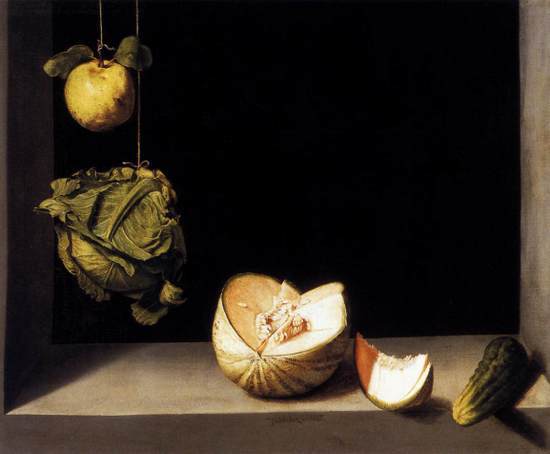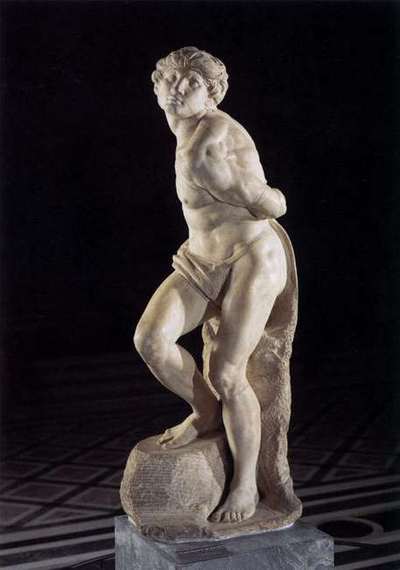Each edition of this contemporary poetry review series selects several poetry collections published in the last 10 years to recommend to its readership. These collections are selected from a pool of more than two thousand supplied and already-held contemporary poetry books. A full list of books reviewed and a partial list of titles held can be found here. Publishers and poets interested in submitting review copies to either this series or the Best American Experimental Writing series can contact the author of this article using this form. All submitted books remain eligible for inclusion in the series for a 10-year period.
![2014-04-29-CollectedPoems366x535.jpg]()
1. Padgett, Ron. Collected Poems (Coffee House Press, 2014). [Info].
It may seem strange to say of a poet that his work is both tight and frenetic, but with Ron Padgett the description is apt. By the same token, comparing any poet to John Ashbery usually serves as little more than back-handed euphemism: a "less-than" sign hangs ghostly over any such analogy. That's especially true in an instance, as here, in which the poet so designated occupies a "second-wave" position with respect to the poetics Ashbery's oeuvre helped circumscribe, The New York School. One even suspects that calling Padgett nearly Ashbery's equal would draw a frown of disapproval from the poet himself, as conventional wisdom has it that Ashbery is Ashbery and everyone else is merely a man or woman who once appeared in a bar or a coffeeshop alongside or nearby the legendary poet.
In fact, Ron Padgett is a case apart. His recently released Collected Poems implicitly implores us to talk about his body of work as that of a twentieth-century Great who is still producing superlative verse today. If, in Padgett's verse, we hear echoes of Ashbery and (as much or more so) English-language translations of some of the best poetry ever written in French -- Follain's and Apollinaire's in particular -- it is not because Padgett borrows from these others, but because his pen is inspired by a similarly compelling fount of genius.
There is a strangeness in most every Padgett poem that is unmistakable. In compositional terms, we might identify it as the product of clipped syntax, variable diction levels, sparse adjectival adornment, and a universality in the most commonly appearing nouns. (The later work is rather more conversational, but still betrays certain telltale Padgettian quirks.) Most poems by Ron Padgett could be said to occupy, taken in their totality, either a low-brow or a mythic space, though the authorial ethos in each case is one that seems eerily out-of-time. It is, as noted above, the same sort of otherworldliness captured in the best translations of notable French Symbolists and Surrealists. Yet to put Padgett in this lineage diminishes him somewhat, for there is a clearsightedness in Padgett's work -- that tightness mentioned above -- that jostles pleasingly with the freneticism of the Surreal Image. One feels, with Padgett, as one often feels with Ashbery, a level of control in the shifts of diction, syntax, and even grammatical sense that is akin to what we'd expect from a piano virtuoso. And that's exactly what Padgett is: a virtuoso.
Consider the poet's earliest work -- those poems one encounters on the first few pages of this massive, 800+ page tome. "Now it is over and everyone knew it", Padgett begins in "Wind," perverting conventional tense construction to invoke past and present simultaneously. It is not, "now it is over and everyone knows it," for Padgett wants his reader experiencing phenomena from multiple perspectives and temporal latitudes at once. Just so, the second stanza offers us, "Reports followed....others go off for refreshment," not "Reports followed....others went off for refreshment." Or again, in the third stanza, it's "Going back where you lose your hands you bask," not "Going back where you lost your hands you bask." What's important here is not the observation of a superficial technique (tense-shifting) but rather how that surface effect is indicative of a relationship with language and genre -- a poetics -- that has defined Padgett his entire writing life. It's the same relationship with language and genre that prompts the poet to begin his "Rome" with "The people begin to get on to you...", which most readers will struggle to avoid reading as "The people begin to get to you..." Padgett knows what his readers expect -- in "Wind," consistent tense, for we always think of a present rather than an historical wind; in "Rome," some critique of the city's denizens, not an acknowledgment of a tourist's vulnerability before same -- and he believes poetry the most effective mirror with which to confront such easy assumptions.
Padgett's relationship with the poetic word is often said to be one in which humor is the first principle, but on the evidence of his Collected, the key term instead should be "consequential inversion." Padgett's poems reveal to us the capacity (perhaps tendency) of language to flip people, events, objects, and even temporalities on their heads.
Language poets have long mined that rich vein of language in which grammar is held to be an unreliable shepherd of inherently unreliable marks; Padgett, a "second-wave New York School poet" in the estimation of most, has a similar interest but also, consistent with his origins, a fascination with the demotic. A cynic might say that certain of the Language poets made things rather too easy for themselves and too hard on others -- as of course the frustration of linguistic convention will tend to frustrate semantics, semiotics, and even temporality in readily theorized ways -- whereas poets of Padgett's ilk take the paradoxically more obvious yet less traveled road: they show us how language that should in no way confuse us nevertheless does so with regularly.
Padgett's grammatical blips, like those of Charles Bernstein (with whom he shares a literary temperament if not a point of origin) are hiding in plain view, begging to be discovered by a reader or editor of even minimal experience and talent. They reveal that the easy is often hard, which is, to this reviewer, a more impressive feat than proving and re-proving the tautology that the hard is often hard. When Padgett writes, in 1969, "I cannot be the dwarf, for I am many dwarfs," or "I came to you as two friends," his challenge of the definite article and the conventional simile, respectively, puts just as much consequential pressure on semantics and semiotics as do the Language poets, but does so where the poem's readers live and breathe -- in the everyday mythology of a supposedly transparent, absorptive language. We see the same work being done, and thus evidence of the same poetics, in Padgett's 2002 poem "Amsterdam", which ends thus: "Outside / the window a man says something / and a girl laughs and says, 'No, Willem, / that is not the real reason.' / Everything freezes." Padgett's concluding freeze-frame reveals that the poem is both of the moment and historical simultaneously, just as all language at once occupies a present and past and (as in "Amsterdam") a still waiting-to-be-born future.
While Padgett's later poems filter the poet's poetics through a more narrative-oriented formula (reminiscent of his peer James Tate), Padgett continues to employ realities as his primary units of measure. Padgett urges his reader to consider the way realities intersect and thereby dissect one another; while the syllabic and phrasal blocks of the Language poets may be intellectually compelling, there is an artifice to such explorations -- a selective straining -- that a body of work like Padgett's exposes. One suspects Padgett's view of language is more indicative of where poetry is headed in the Internet Age than is the post-Language lineage of theory-driven High Concept and deconstructive disjunction.
Many who review Padgett's Collected will note its humor, and there certainly is that in the many pages of this volume -- though it's more often the humor of surprise than the humor of a story cunningly told. In any case, one must be wary of critics' use of terms such as "humorous" and "conversational" -- the latter term being one I've used here -- as too often these are dog whistles to a certain type of cynic, or else back-handed compliments implying a lack of artistic commitment in and to the work under review. In other words, I don't think Padgett is necessarily well-served by those of his readers whose praise of him suggests he is merely the nation's foremost light-versifier, let alone by readers who go to Padgett "for the humor" rather than the poems' mature yet entertaining treatment of timeless linguistic conundrums. The best stand-up comedy is seamless, inasmuch as suspension of disbelief requires submission to a narrative; with Padgett, the seams don't merely show, they glow. They wish to be found, and, having been found, amaze with how succinctly yet passionately they unravel all expectations.
As we move into a period of literary history in which allegedly transparent language -- say, the banal utterances that litter every email, text, and website -- is revealed to contain within it dangers previously unimagined, we need a poet like Padgett to remind us that demotic language and semantic data has always been unreliable and anti-accumulative. To call Padgett "second-wave" anything is to deny his more important role as an influential father of the poetries of metaconsciousness still to come.
[Excerpt.]
![2014-04-29-tumblr_n1vo7lLozX1s9mfo5o1_1280.jpg]()
2. Nicholson, Sara. The Living Method (The Song Cave, 2014). [Info].
An early front-runner for this reviewer's favorite poetry collection of 2014, Sara Nicholson's The Living Method beggars any description beyond designation as an act of genius. It is not exaggeration to say that each page offers some new illumination for the reader's third eye; if the post-avant lyric has vitality as a form that accurately describes things as they are (rather than things as they merely appear), that vitality is exercised several times in each poem by Nicholson. I've never before been moved to say that I hung on every word of a poetry collection; now I've both done it and said it. The Living Method is that good.
The title of Nicholson's debut tells us much. Living is, by at least one measure, the absence of method: a transient effect produced by instinctive respiration, supplemented haphazardly by various forms of consumption. Living well is, by any measure, the absence of method: though there are common themes to be found, its prerequisites finally differ person to person, and are therefore unreplicable as between persons -- several decades of GQ and Cosmopolitan articles suggesting otherwise notwithstanding. Life is, by both nature and design, wild; to attach to it a yearning for the methodical is to change it irrevocably and render it nearly impossible to see. Transplant these maxims to language, and the form taken might just be this poetry collection by Sara Nicholson. Nicholson sees from outside to inside, and from inside to outside, exactingly, but never fails to register how regularized acts of seeing (and speaking of seeing) change not just what is seen but what is. Every handhold briefly grips the hand that holds it, in other words, but it likewise begins its degeneration in the same moment.
What strikes one most about The Living Method is how fully formed it is, not just as an aesthetic "voice" but also, and far more importantly, as a statement of being and a vision of what speech may do. It's terrifying to encounter a first collection this sure of itself; that terror is only amplified by the knowledge that the certainty is well-earned. Nicholson's control of the line is superlative, inasmuch as each line either accumulates from the line preceding it or torques it in a fully committed way. One reason Nicholson is so adept at these maneuvers is that her work is equal parts lyric and discursive, material and abstract, tonal and toneless. That the collection operates along the entirety of each of these spectra allows it a sort of dexterity that less rangy work would lack. And of course, behind all these features is that element without which any poetry is inoperative: genuine vision. There is real wisdom in these pages -- a bent toward entirely novel aphorisms that younger poets often avoid out of fear they have too little to say. Nicholson has much to say; all of it is said exceedingly well; and all of it is well worth reading and rereading. This is quite simply a stunning collection.
[Excerpt.]
![2014-04-29-poemsdescriptivecover.jpg]()
3. Earley, Tim. Poems Descriptive of Rural Life and Scenery (Horse Less Press, 2014). [Info].
A theory one often hears about contemporary poetry is that a poet is either a bard or a seer; that is, either a poetry describes what its author has seen or else describes the unseen and foretells its future manifestations. It's silly, of course -- as are all binaries and even most subtle taxonomies -- because with so much poetry in the water in America, it's rare to find any poet who isn't the product of hybridic influences. Sometimes we bard, sometimes we seer, and somehow the mix of each we brew -- if we're lucky -- is particularly ours.
In the nineteenth century, one such eccentric mix could be found in the work of John Clare, a poet who's now rightly considered one of the foremost authors of his era. His magnum opus, Poems Descriptive of Rural Life and Scenery, has stood the test of time as a work of singular brilliance.
In this century (and towards the end of the last one) one iteration of mixed barding and seering we saw was what we might call the Southern Seer. The Southern Seer is of course not a monolithic approach to language, as in fact within this vein there are myriad spectra of distinction (in both senses of that word). If we were to identify a recent Great in the lineage of the Southern Seer -- other than Clare, whose English North recalls but is yet distinct from our American South -- it would be Arkansas's Frank Stanford, whose magnum opus The Battlefield Where the Moon Says I Love You is an unrelenting, stanzaless torrent of prophetic vision that also, perhaps owing to the Southern vintage of its seering, is rooted enough in the soil of a life and a region that its descriptions feel as earnest, earthy, and deeply considered as they are ripe for the revival tent.
Its history aside, the title of Tim Earley's Poems Descriptive of Rural Life and Scenery would suggest a bardic inclination -- the sober recounting of workaday rather than mystical visions of a land, its people, and its operations -- but what's contained within these two covers is Southern Seer par excellence. Like Stanford, Earley is a master of anaphora, Biblical rhythms, revelatory testimony, tell-it-slant aggression, and juxtapositive imagery that borrows heavily from the Southern lexicon. It is impossible to imagine these poems not reading well out loud, and on the page they vibrate with a barely suppressed fervor. There are echoes here of fellow Southern Seers Abraham Smith, Maurice Manning, Matthew Henriksen, and Joe Hall (not all of whom were born or currently live in the South, though this is hardly a prerequisite to writing in the milieu described here; I myself was "born in the woods," as was Joe Hall according to his biography, and it seems to me there is something of the Southern Seer in any verse that comes directly from that sort of environment). We find here pain, anger, alienation, and a loss of anchor, which inclines me to call Poems Descriptive of Rural Life and Scenery a distinctly masculine collection of poetry, if that adjective can still be used today without seeming in some sense pejorative.
Earley's poetry is at once the verse of the distant past -- the Bible -- and the poetry of a yet-unrealized future, assuming that future is a post-apocalyptic one in which language has degenerated not unpleasingly into its native grit. Where so much contemporary poetry reads as lacking in urgency, Earley's is not merely urgent but dam-broken. As beautifully as these poems sit on the page, it feels a shame not to hear them in the mouths of every man or woman who has ever felt, in the present, the flood of ancient emotion this work channels. Poems Descriptive of Rural Life and Scenery may not be an obvious byproduct of the Internet Age, but its swell and retreat, its churlish anxiety, its almost drunken belligerence coupled with an almost holy whispering is very much the zeitgeist of my generation and the one succeeding it. Any moment in which the soul is briefly unwell but also gloriously articulate sounds like these poems do. As often as not, Earley's pacing and syllabics are straight from Revelation, though the sense of being in the midst of a personal end-times is one any man or woman of feeling living in this Age could attest to with one hand raised.
This collection is highly recommended to anyone with a pulse; to anyone with ears, recommended also are the words as heard in recording or in live performance, if you happen to be lucky enough to be anywhere Tim Earley is.
[Excerpt.]
____________
A graduate of Harvard Law School and the Iowa Writers' Workshop, Seth Abramson is the author of three collections of poetry, most recently Thievery (University of Akron Press, 2013), winner of the 2012 Akron Poetry Prize, and Northerners (Western Michigan University Press, 2011), winner of the 2010 Green Rose Prize from New Issues Poetry & Prose. A regular contributor to both Poets & Writers and Indiewire, he is also Series Co-Editor for Best American Experimental Writing, whose first edition will be published by Omnidawn in 2014, and whose second and subsequent editions will be published by Wesleyan University Press. He is presently a doctoral candidate (ABD) in English Literature at the University of Wisconsin-Madison.
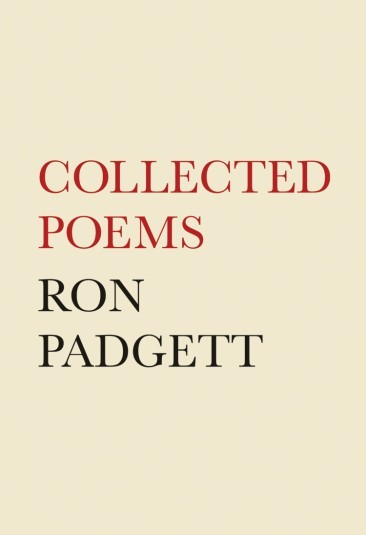
1. Padgett, Ron. Collected Poems (Coffee House Press, 2014). [Info].
It may seem strange to say of a poet that his work is both tight and frenetic, but with Ron Padgett the description is apt. By the same token, comparing any poet to John Ashbery usually serves as little more than back-handed euphemism: a "less-than" sign hangs ghostly over any such analogy. That's especially true in an instance, as here, in which the poet so designated occupies a "second-wave" position with respect to the poetics Ashbery's oeuvre helped circumscribe, The New York School. One even suspects that calling Padgett nearly Ashbery's equal would draw a frown of disapproval from the poet himself, as conventional wisdom has it that Ashbery is Ashbery and everyone else is merely a man or woman who once appeared in a bar or a coffeeshop alongside or nearby the legendary poet.
In fact, Ron Padgett is a case apart. His recently released Collected Poems implicitly implores us to talk about his body of work as that of a twentieth-century Great who is still producing superlative verse today. If, in Padgett's verse, we hear echoes of Ashbery and (as much or more so) English-language translations of some of the best poetry ever written in French -- Follain's and Apollinaire's in particular -- it is not because Padgett borrows from these others, but because his pen is inspired by a similarly compelling fount of genius.
There is a strangeness in most every Padgett poem that is unmistakable. In compositional terms, we might identify it as the product of clipped syntax, variable diction levels, sparse adjectival adornment, and a universality in the most commonly appearing nouns. (The later work is rather more conversational, but still betrays certain telltale Padgettian quirks.) Most poems by Ron Padgett could be said to occupy, taken in their totality, either a low-brow or a mythic space, though the authorial ethos in each case is one that seems eerily out-of-time. It is, as noted above, the same sort of otherworldliness captured in the best translations of notable French Symbolists and Surrealists. Yet to put Padgett in this lineage diminishes him somewhat, for there is a clearsightedness in Padgett's work -- that tightness mentioned above -- that jostles pleasingly with the freneticism of the Surreal Image. One feels, with Padgett, as one often feels with Ashbery, a level of control in the shifts of diction, syntax, and even grammatical sense that is akin to what we'd expect from a piano virtuoso. And that's exactly what Padgett is: a virtuoso.
Consider the poet's earliest work -- those poems one encounters on the first few pages of this massive, 800+ page tome. "Now it is over and everyone knew it", Padgett begins in "Wind," perverting conventional tense construction to invoke past and present simultaneously. It is not, "now it is over and everyone knows it," for Padgett wants his reader experiencing phenomena from multiple perspectives and temporal latitudes at once. Just so, the second stanza offers us, "Reports followed....others go off for refreshment," not "Reports followed....others went off for refreshment." Or again, in the third stanza, it's "Going back where you lose your hands you bask," not "Going back where you lost your hands you bask." What's important here is not the observation of a superficial technique (tense-shifting) but rather how that surface effect is indicative of a relationship with language and genre -- a poetics -- that has defined Padgett his entire writing life. It's the same relationship with language and genre that prompts the poet to begin his "Rome" with "The people begin to get on to you...", which most readers will struggle to avoid reading as "The people begin to get to you..." Padgett knows what his readers expect -- in "Wind," consistent tense, for we always think of a present rather than an historical wind; in "Rome," some critique of the city's denizens, not an acknowledgment of a tourist's vulnerability before same -- and he believes poetry the most effective mirror with which to confront such easy assumptions.
Padgett's relationship with the poetic word is often said to be one in which humor is the first principle, but on the evidence of his Collected, the key term instead should be "consequential inversion." Padgett's poems reveal to us the capacity (perhaps tendency) of language to flip people, events, objects, and even temporalities on their heads.
Language poets have long mined that rich vein of language in which grammar is held to be an unreliable shepherd of inherently unreliable marks; Padgett, a "second-wave New York School poet" in the estimation of most, has a similar interest but also, consistent with his origins, a fascination with the demotic. A cynic might say that certain of the Language poets made things rather too easy for themselves and too hard on others -- as of course the frustration of linguistic convention will tend to frustrate semantics, semiotics, and even temporality in readily theorized ways -- whereas poets of Padgett's ilk take the paradoxically more obvious yet less traveled road: they show us how language that should in no way confuse us nevertheless does so with regularly.
Padgett's grammatical blips, like those of Charles Bernstein (with whom he shares a literary temperament if not a point of origin) are hiding in plain view, begging to be discovered by a reader or editor of even minimal experience and talent. They reveal that the easy is often hard, which is, to this reviewer, a more impressive feat than proving and re-proving the tautology that the hard is often hard. When Padgett writes, in 1969, "I cannot be the dwarf, for I am many dwarfs," or "I came to you as two friends," his challenge of the definite article and the conventional simile, respectively, puts just as much consequential pressure on semantics and semiotics as do the Language poets, but does so where the poem's readers live and breathe -- in the everyday mythology of a supposedly transparent, absorptive language. We see the same work being done, and thus evidence of the same poetics, in Padgett's 2002 poem "Amsterdam", which ends thus: "Outside / the window a man says something / and a girl laughs and says, 'No, Willem, / that is not the real reason.' / Everything freezes." Padgett's concluding freeze-frame reveals that the poem is both of the moment and historical simultaneously, just as all language at once occupies a present and past and (as in "Amsterdam") a still waiting-to-be-born future.
While Padgett's later poems filter the poet's poetics through a more narrative-oriented formula (reminiscent of his peer James Tate), Padgett continues to employ realities as his primary units of measure. Padgett urges his reader to consider the way realities intersect and thereby dissect one another; while the syllabic and phrasal blocks of the Language poets may be intellectually compelling, there is an artifice to such explorations -- a selective straining -- that a body of work like Padgett's exposes. One suspects Padgett's view of language is more indicative of where poetry is headed in the Internet Age than is the post-Language lineage of theory-driven High Concept and deconstructive disjunction.
Many who review Padgett's Collected will note its humor, and there certainly is that in the many pages of this volume -- though it's more often the humor of surprise than the humor of a story cunningly told. In any case, one must be wary of critics' use of terms such as "humorous" and "conversational" -- the latter term being one I've used here -- as too often these are dog whistles to a certain type of cynic, or else back-handed compliments implying a lack of artistic commitment in and to the work under review. In other words, I don't think Padgett is necessarily well-served by those of his readers whose praise of him suggests he is merely the nation's foremost light-versifier, let alone by readers who go to Padgett "for the humor" rather than the poems' mature yet entertaining treatment of timeless linguistic conundrums. The best stand-up comedy is seamless, inasmuch as suspension of disbelief requires submission to a narrative; with Padgett, the seams don't merely show, they glow. They wish to be found, and, having been found, amaze with how succinctly yet passionately they unravel all expectations.
As we move into a period of literary history in which allegedly transparent language -- say, the banal utterances that litter every email, text, and website -- is revealed to contain within it dangers previously unimagined, we need a poet like Padgett to remind us that demotic language and semantic data has always been unreliable and anti-accumulative. To call Padgett "second-wave" anything is to deny his more important role as an influential father of the poetries of metaconsciousness still to come.
[Excerpt.]
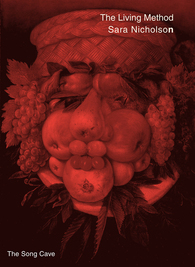
2. Nicholson, Sara. The Living Method (The Song Cave, 2014). [Info].
An early front-runner for this reviewer's favorite poetry collection of 2014, Sara Nicholson's The Living Method beggars any description beyond designation as an act of genius. It is not exaggeration to say that each page offers some new illumination for the reader's third eye; if the post-avant lyric has vitality as a form that accurately describes things as they are (rather than things as they merely appear), that vitality is exercised several times in each poem by Nicholson. I've never before been moved to say that I hung on every word of a poetry collection; now I've both done it and said it. The Living Method is that good.
The title of Nicholson's debut tells us much. Living is, by at least one measure, the absence of method: a transient effect produced by instinctive respiration, supplemented haphazardly by various forms of consumption. Living well is, by any measure, the absence of method: though there are common themes to be found, its prerequisites finally differ person to person, and are therefore unreplicable as between persons -- several decades of GQ and Cosmopolitan articles suggesting otherwise notwithstanding. Life is, by both nature and design, wild; to attach to it a yearning for the methodical is to change it irrevocably and render it nearly impossible to see. Transplant these maxims to language, and the form taken might just be this poetry collection by Sara Nicholson. Nicholson sees from outside to inside, and from inside to outside, exactingly, but never fails to register how regularized acts of seeing (and speaking of seeing) change not just what is seen but what is. Every handhold briefly grips the hand that holds it, in other words, but it likewise begins its degeneration in the same moment.
What strikes one most about The Living Method is how fully formed it is, not just as an aesthetic "voice" but also, and far more importantly, as a statement of being and a vision of what speech may do. It's terrifying to encounter a first collection this sure of itself; that terror is only amplified by the knowledge that the certainty is well-earned. Nicholson's control of the line is superlative, inasmuch as each line either accumulates from the line preceding it or torques it in a fully committed way. One reason Nicholson is so adept at these maneuvers is that her work is equal parts lyric and discursive, material and abstract, tonal and toneless. That the collection operates along the entirety of each of these spectra allows it a sort of dexterity that less rangy work would lack. And of course, behind all these features is that element without which any poetry is inoperative: genuine vision. There is real wisdom in these pages -- a bent toward entirely novel aphorisms that younger poets often avoid out of fear they have too little to say. Nicholson has much to say; all of it is said exceedingly well; and all of it is well worth reading and rereading. This is quite simply a stunning collection.
[Excerpt.]
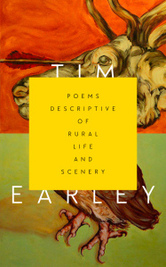
3. Earley, Tim. Poems Descriptive of Rural Life and Scenery (Horse Less Press, 2014). [Info].
A theory one often hears about contemporary poetry is that a poet is either a bard or a seer; that is, either a poetry describes what its author has seen or else describes the unseen and foretells its future manifestations. It's silly, of course -- as are all binaries and even most subtle taxonomies -- because with so much poetry in the water in America, it's rare to find any poet who isn't the product of hybridic influences. Sometimes we bard, sometimes we seer, and somehow the mix of each we brew -- if we're lucky -- is particularly ours.
In the nineteenth century, one such eccentric mix could be found in the work of John Clare, a poet who's now rightly considered one of the foremost authors of his era. His magnum opus, Poems Descriptive of Rural Life and Scenery, has stood the test of time as a work of singular brilliance.
In this century (and towards the end of the last one) one iteration of mixed barding and seering we saw was what we might call the Southern Seer. The Southern Seer is of course not a monolithic approach to language, as in fact within this vein there are myriad spectra of distinction (in both senses of that word). If we were to identify a recent Great in the lineage of the Southern Seer -- other than Clare, whose English North recalls but is yet distinct from our American South -- it would be Arkansas's Frank Stanford, whose magnum opus The Battlefield Where the Moon Says I Love You is an unrelenting, stanzaless torrent of prophetic vision that also, perhaps owing to the Southern vintage of its seering, is rooted enough in the soil of a life and a region that its descriptions feel as earnest, earthy, and deeply considered as they are ripe for the revival tent.
Its history aside, the title of Tim Earley's Poems Descriptive of Rural Life and Scenery would suggest a bardic inclination -- the sober recounting of workaday rather than mystical visions of a land, its people, and its operations -- but what's contained within these two covers is Southern Seer par excellence. Like Stanford, Earley is a master of anaphora, Biblical rhythms, revelatory testimony, tell-it-slant aggression, and juxtapositive imagery that borrows heavily from the Southern lexicon. It is impossible to imagine these poems not reading well out loud, and on the page they vibrate with a barely suppressed fervor. There are echoes here of fellow Southern Seers Abraham Smith, Maurice Manning, Matthew Henriksen, and Joe Hall (not all of whom were born or currently live in the South, though this is hardly a prerequisite to writing in the milieu described here; I myself was "born in the woods," as was Joe Hall according to his biography, and it seems to me there is something of the Southern Seer in any verse that comes directly from that sort of environment). We find here pain, anger, alienation, and a loss of anchor, which inclines me to call Poems Descriptive of Rural Life and Scenery a distinctly masculine collection of poetry, if that adjective can still be used today without seeming in some sense pejorative.
Earley's poetry is at once the verse of the distant past -- the Bible -- and the poetry of a yet-unrealized future, assuming that future is a post-apocalyptic one in which language has degenerated not unpleasingly into its native grit. Where so much contemporary poetry reads as lacking in urgency, Earley's is not merely urgent but dam-broken. As beautifully as these poems sit on the page, it feels a shame not to hear them in the mouths of every man or woman who has ever felt, in the present, the flood of ancient emotion this work channels. Poems Descriptive of Rural Life and Scenery may not be an obvious byproduct of the Internet Age, but its swell and retreat, its churlish anxiety, its almost drunken belligerence coupled with an almost holy whispering is very much the zeitgeist of my generation and the one succeeding it. Any moment in which the soul is briefly unwell but also gloriously articulate sounds like these poems do. As often as not, Earley's pacing and syllabics are straight from Revelation, though the sense of being in the midst of a personal end-times is one any man or woman of feeling living in this Age could attest to with one hand raised.
This collection is highly recommended to anyone with a pulse; to anyone with ears, recommended also are the words as heard in recording or in live performance, if you happen to be lucky enough to be anywhere Tim Earley is.
[Excerpt.]
A graduate of Harvard Law School and the Iowa Writers' Workshop, Seth Abramson is the author of three collections of poetry, most recently Thievery (University of Akron Press, 2013), winner of the 2012 Akron Poetry Prize, and Northerners (Western Michigan University Press, 2011), winner of the 2010 Green Rose Prize from New Issues Poetry & Prose. A regular contributor to both Poets & Writers and Indiewire, he is also Series Co-Editor for Best American Experimental Writing, whose first edition will be published by Omnidawn in 2014, and whose second and subsequent editions will be published by Wesleyan University Press. He is presently a doctoral candidate (ABD) in English Literature at the University of Wisconsin-Madison.
